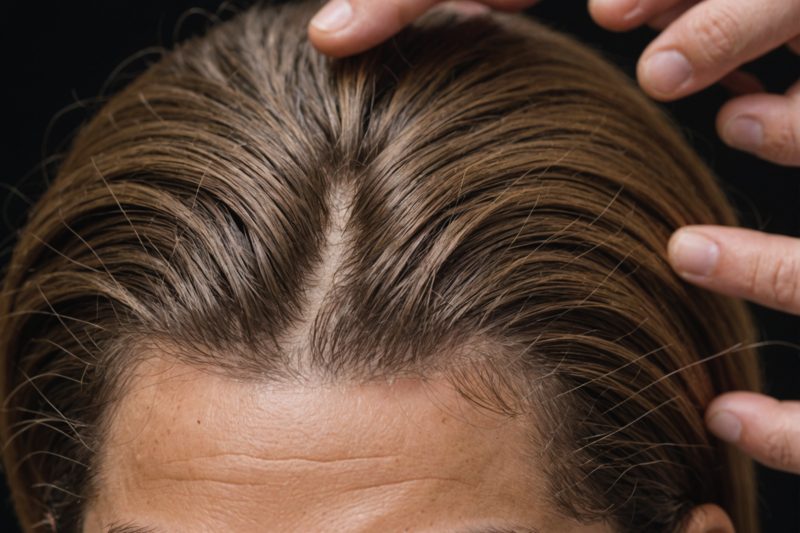Androgenetic alopecia (AGA), commonly known as male or female pattern baldness, remains one of the leading causes of hair loss worldwide. Its development is complex and influenced by a myriad of genetic and hormonal factors. At the nexus of this condition lies the androgenic-anabolic balance, a concept essential for understanding the physiological and metabolic pathways that influence hair, skin, and overall health. This article delves into the intricate framework of the androgenic-anabolic balance, outlining its implications in AGA and presenting potential strategies for effective alopecia treatment.
The Role of Androgens in Hair Loss
Androgens, such as testosterone and dihydrotestosterone (DHT), play a critical role in the hair growth cycle. Elevated levels of DHT are particularly linked to hair follicle miniaturization, which is a hallmark of AGA. Understanding how these hormones influence hair loss involves examining their mechanisms of action within the body.
Mechanisms of Androgen Action
- Conversion: Testosterone is converted to DHT by the enzyme 5-alpha reductase.
- Receptor Binding: DHT binds to androgen receptors in hair follicles, inhibiting growth and shortening the hair growth cycle.
- Follicle Sensitivity: Genetic predisposition affects follicle sensitivity to DHT, with some individuals experiencing more severe hair loss than others.
Understanding Anabolic Hormones
On the other side of the hormonal spectrum lies anabolic hormones, which promote tissue repair and growth, including hair follicles. The balance between androgenic and anabolic hormones is significant, as disruptions in this equilibrium may exacerbate AGA. Factors such as age, stress, and overall health can influence this balance.
Key Anabolic Hormones
| Hormone | Function | Sources |
|---|---|---|
| Insulin | Promotes cell growth and repair | Food intake; particularly carbohydrates |
| Growth Hormone | Stimulates growth and cellular regeneration | Secreted by the pituitary gland |
| Estrogen | Regulates hair growth cycles | Produced in ovaries and testes |
The Analytic Theory of Physio-Metabolic Methods
The analytic theory of physio-metabolic methods for treating AGA proposes a comprehensive approach that takes individual hormonal profiles into account. Instead of a one-size-fits-all treatment, this methodology advocates for a personalized strategy based on understanding a person’s unique biological makeup.
Steps in the Physio-Metabolic Approach
- Assessment of Hormonal Levels: Blood tests to evaluate levels of DHT, testosterone, insulin, and growth hormones.
- Dietary Adjustments: Implementing nutrient-rich diets that support hormonal balance. This includes foods rich in omega-3 fatty acids, zinc, and vitamins that boost hair health.
- Exercise Regimen: A tailored exercise program that includes both aerobic and strength training to enhance overall metabolic function.
- Stress Management Techniques: Employing mindfulness, yoga, or therapy to minimize stress, which can impact hormonal balances.
Hormonal Treatments and Medications
Various hormonal treatments aim to restore the balance between androgens and anabolic hormones. Medications like finasteride act as 5-alpha reductase inhibitors, preventing the conversion of testosterone to DHT. However, these treatments often present side effects, and their long-term effectiveness is still a matter of ongoing research.
Potential Side Effects of Treatments
- Decreased libido
- Erectile dysfunction
- Gynecomastia (development of breast tissue)
The Future of AGA Treatment
Emerging research in the field of hair restoration underscores the need for a multidimensional approach to AGA treatment. Advances in biotechnology and pharmacology may lead to the development of more effective treatments with fewer side effects. Gene therapy and stem cell applications are at the forefront, offering promising avenues for combatting AGA.
Conclusion
Androgenetic alopecia remains a complex condition influenced by the delicate interplay between androgens and anabolic hormones. Understanding this balance can lead to the development of more effective treatment modalities. The analytic theory of physio-metabolic methods offers a promising framework to tailor treatments according to individual hormonal profiles. As research continues to unfold, it holds immense potential for improving outcomes for those affected by AGA, creating a future wherein effective solutions can be personalized for each individual.


